Explore Hoa Lo Prison - Historical Remnants in the Heart of Hanoi
Hoả Lò Prison, located at 1 Hoả Lò Street, Hoàn Kiếm, Hanoi, stands as a testament to a tumultuous period in history, enduring the test of time until this very day. This historical site serves as a vivid representation of a painful era, symbolizing the indomitable spirit and resilience of the Vietnamese people who ardently love their country.
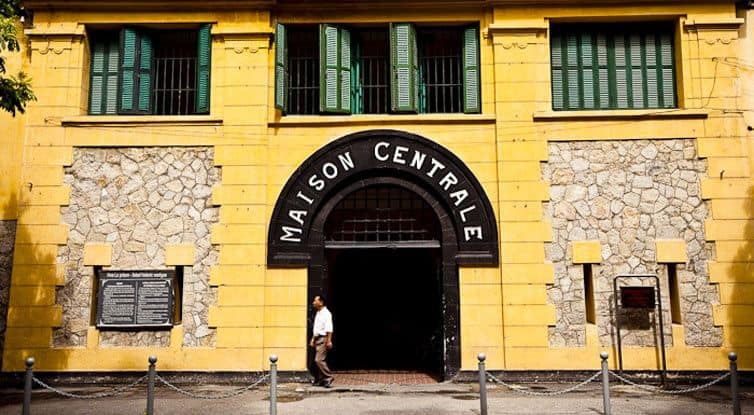
Hoả Lò Prison, also known as Hanoi Hilton or Maison Centrale in French, is a former prison located on Hoả Lò Street, Hoàn Kiếm District, Hanoi. Constructed by the French in 1896 on the outskirts of the city at that time, the prison served as a central penitentiary for both the central and northern regions of Vietnam, accommodating primarily political prisoners and those who opposed colonial rule.
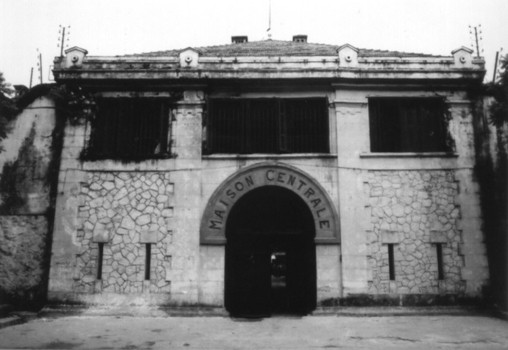
Hoả Lò Prison, in its early days of construction (Photo collected)
During the French colonial period, Hoả Lò Prison was designed and built with a structure comprising 4-meter-high stone walls, reinforced with electric wires. The prison area was divided into four sections: A, B, C, and D, with the following purposes:
Section A, B: for prisoners under investigation, unimportant prisoners, or those who violated the prison regulations.
Section C: for French or foreign prisoners.
Section D: for prisoners awaiting the death penalty.
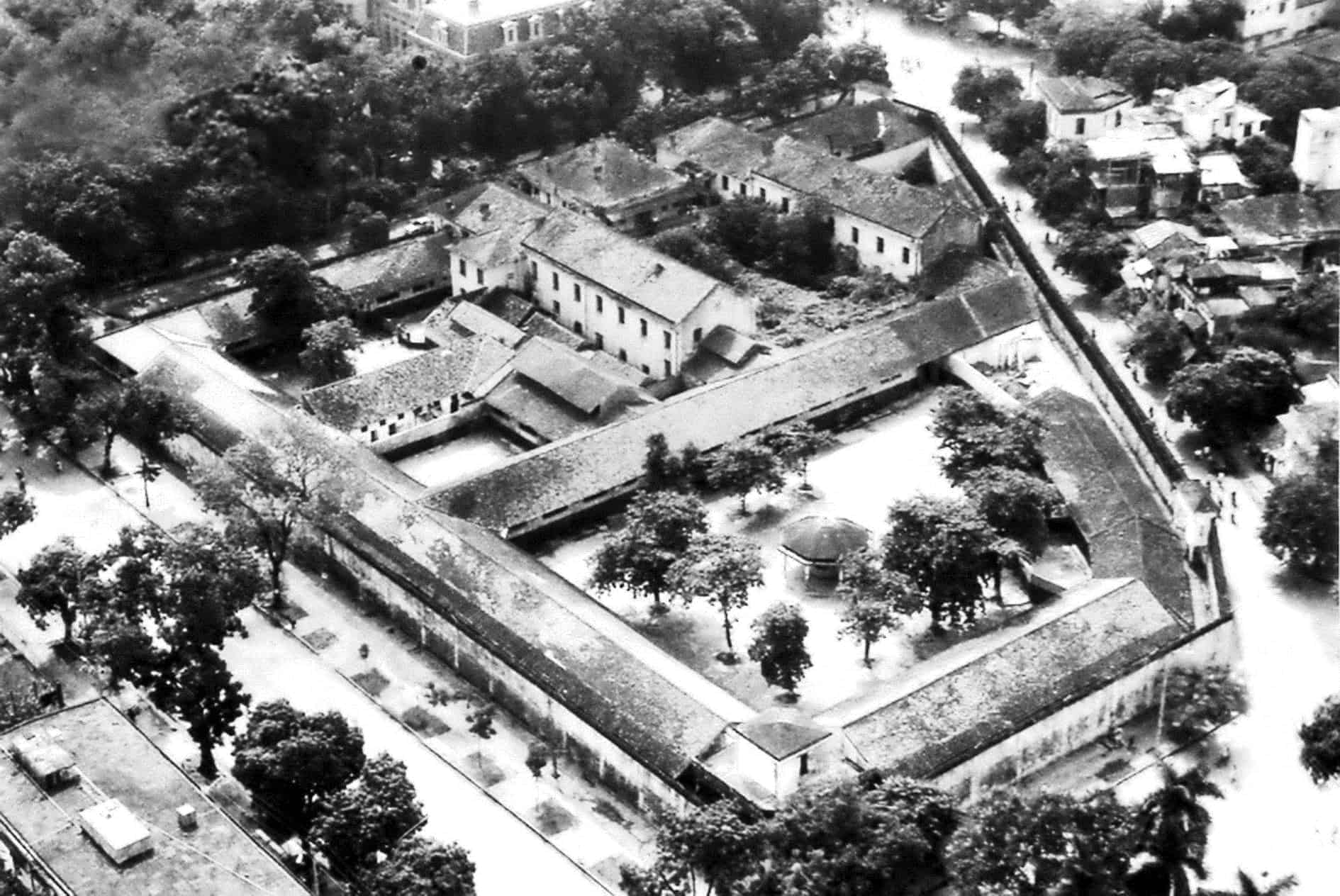
The prison was divided into different areas for various types of prisoners (Photo collected)
The total area of the entire former prison was over 12,000 square meters. However, today only 2,434 square meters have been preserved and retained as a historical site, serving the purpose of tourism for those who wish to visit and witness firsthand the scenery of the colonial-era prison.
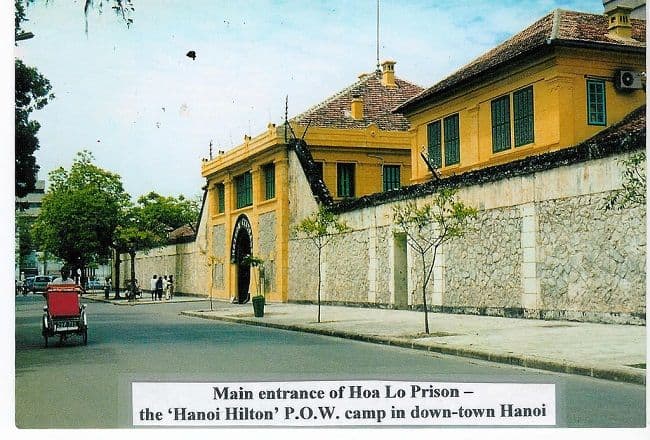
The American prisoners of war often sarcastically referred to Hoa Lo Prison as the "Hanoi Hilton" (Photo collected)
Dubbed as the "hell on earth," the Hoa Lo Prison was the most dreaded prison in Southeast Asia. Throughout its operation, it became the place of confinement for countless generations of soldiers and Vietnamese revolutionaries. The prison's architectural design featured brutal torture methods and extreme forms of coercion, with the most notorious being the guillotine and the "tiger cages." These inhumane practices earned the prison a notorious reputation, ranking it among the top 10 most infamous prisons in the world.
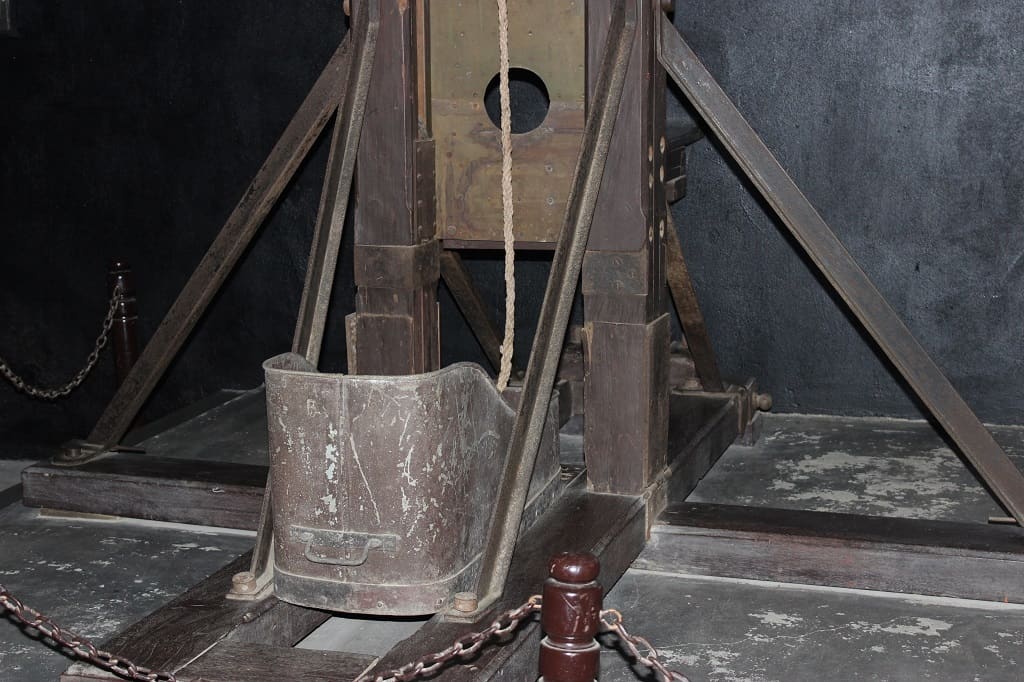
The guillotine, a medieval weapon that contributed to the fame of Hoa Lo prison (Collectible photo)
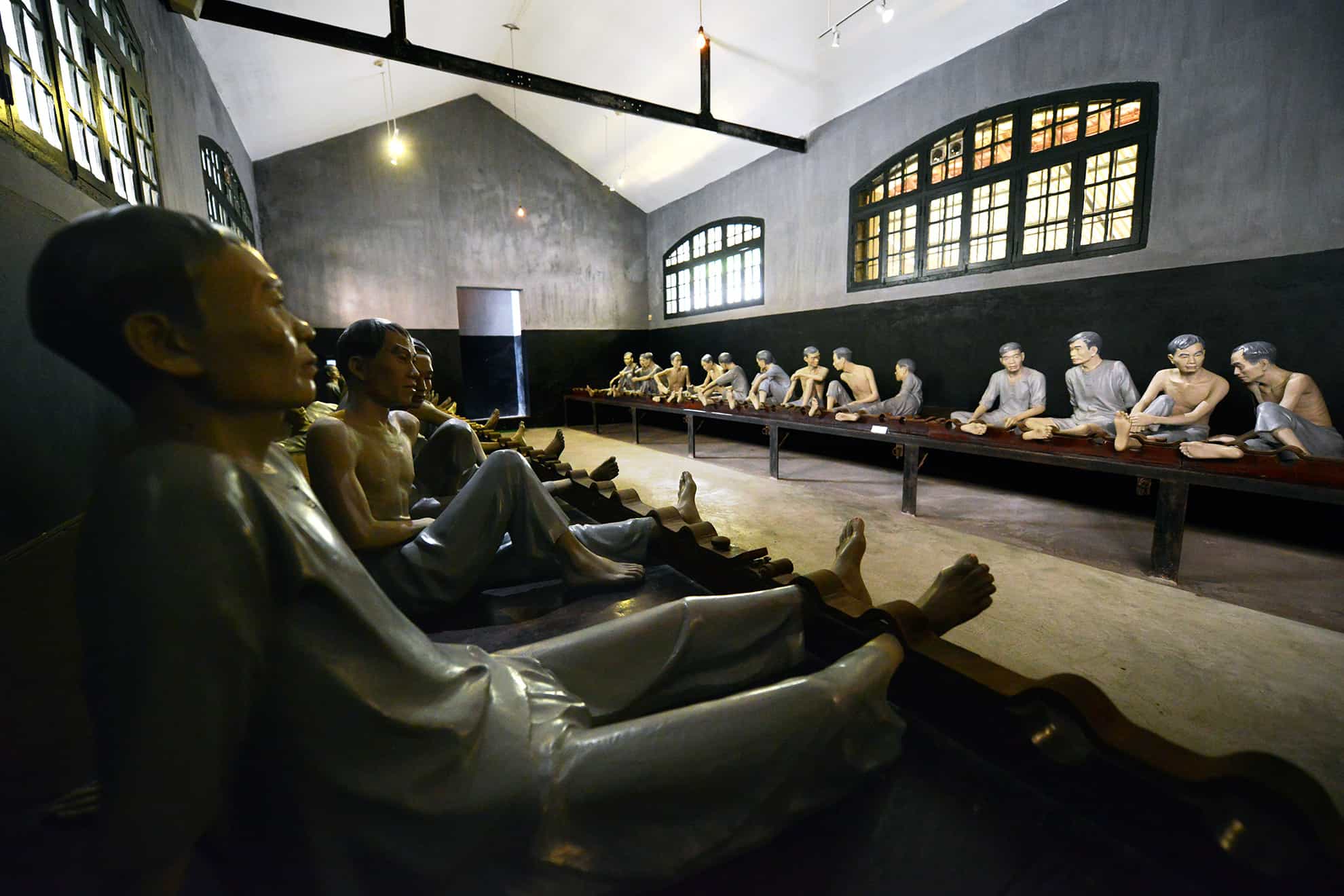
Scary scene inside the prison, where prisoners are chained with steel shackles at their feet (Collection photo)
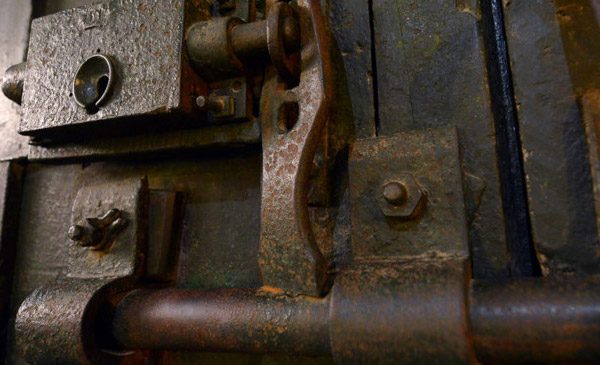
All the courses used here are specialized keys sent from France and managed very closely (Photo collection)

Sculpture depicting torture scenes in prison (Collectible photos)
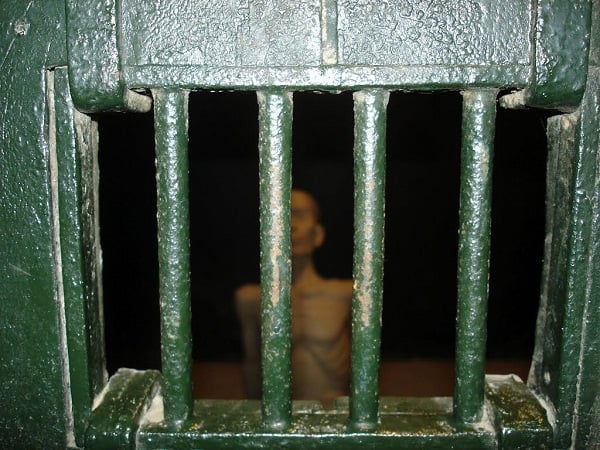
The dark cells are considered a horrifying nightmare for any prisoner, with their scorching heat, violent beatings, shackles, cramped living conditions, and lack of hygiene.
Every aspect of life, including eating, sleeping, and personal hygiene, is confined to a small, dark, and suffocating space. Most individuals imprisoned in these cells eventually suffer from physical ailments, skin diseases, and psychological distress due to the lack of sanitation and exposure to sunlight. (Photo collected)
During the period of 1939-1945, a female political prisoner, who later documented her experiences in the memoir "Years Never Forgotten," described the conditions in the prison as follows:
"… The weekly prison meals followed a specific schedule: Sundays were reserved for a pork meal, often consisting of tough and lean pork. Three meals a week consisted of tough boiled buffalo meat, resembling shoe soles, while the remaining meals included dried and moldy fish, boiled soybeans, and overcooked tofu. The vegetables varied depending on the season, ranging from leafy greens to root vegetables, boiled pumpkins, or overgrown water spinach. The rice provided was long-grain white rice from the southern region, which had been stored for too long, resulting in a taste that was both bland and bitter. Consuming such rice for an extended period caused many individuals to suffer from heart-related swelling, and there were months when the death toll reached up to 40 people…"
Despite such brutal repression, the spirit of patriotism and revolutionary struggle continued to thrive within the dark confines of the prison. Revolutionary propaganda sessions, educational movements, and political theory classes clandestinely took place, defying the colonial regime's whip, with the aim of disseminating the Party's ideals, enlightening soldiers, and establishing connections with external organizations in the struggle for survival. Moreover, revolutionary newspapers such as "Prisoner's Life" and "Prison Magazine" were born within the very oppressive and exploitative environment to educate and raise awareness among Party members, igniting the flames of revolution from within the enemy's stronghold. It was through such activities that life in this laborious prison began to gradually diminish its darkness.
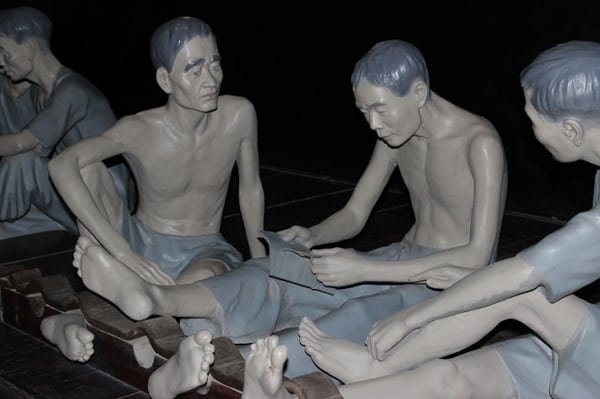
The learning movement, political theory classes are still open somewhere in the dark prison space (Collectible photos)
After the liberation of the capital in 1954, Hoa Lo Prison served as a detention facility for American prisoners of war until 1973. With its historical significance, Hoa Lo Prison has now become a fascinating tourist destination in Hanoi, attracting a large number of visitors from both within and outside the country. The site welcomes all those who wish to explore it, with an affordable ticket price of 30,000 VND per person and a 50% discount for students, disabled individuals, senior citizens, and those who fall under the social welfare category. Additionally, children under 15 years old, severely disabled individuals, and those who have made significant contributions to the revolution are granted free admission.
Ngoc Nguyen